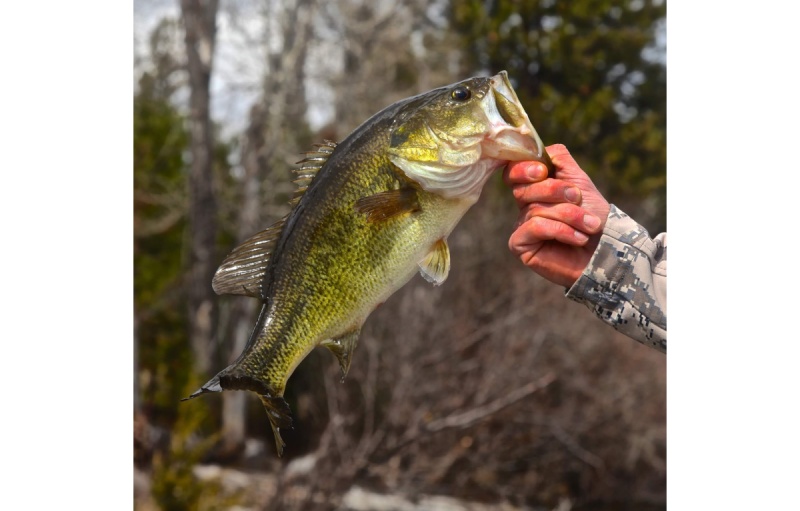Lifestyle
Devan Bald Discusses Proven Techniques for Landing Largemouth Legends

Are you tired of casting your line into the water and coming up empty-handed? Have you been struggling to catch a largemouth bass worthy of being called a legend? If so, this article is for you. Devan Bald will explore proven techniques for landing those elusive largemouths and help you quickly become a master angler. So, grab your gear and get ready to master your fishing game.
What is Largemouth Bass Fishing?
Largemouth bass fishing is the act of catching the species known as largemouth bass. Anglers pursue this popular sport fish in freshwater, using techniques such as topwater lures, jigs, and crankbaits.
Understanding largemouth bass’ behavior, habitat, and feeding patterns is crucial for successful fishing. It is essential to clearly understand what largemouth bass fishing requires to utilize the appropriate strategies and equipment.
What are the Best Techniques for Catching Largemouth Bass?
This section will discuss the top five proven techniques for landing these legendary fish. From topwater lures to drop shooting, each technique has a unique strategy and can be effective in different situations.
1. Using Topwater Lures
- Choose the right topwater lure based on the water and weather conditions.
- Cast near cover or structures to attract bass hiding in the shadows.
- Use a stop-and-go retrieval to mimic injured prey and enticing strikes.
2. Flipping and Pitching
- Choose the Right Equipment: Select a heavy power rod, strong reel, and a stout line to handle dense cover.
- Mastering the Technique: Practice accuracy and stealth, precisely flipping and pitching the bait to nearby targets.
- Perfecting the Pitch: Hone your skills in pitching the bait at farther targets, maintaining a low profile.
3. Jigging
- Choose the right jig: Select a jig based on the bass’s depth, water clarity, and behavior.
- Retrieve technique: Experiment with various retrieval methods such as dragging, hopping, or swimming the jig to entice strikes.
- Pair with trailers: Enhance the jig’s effectiveness by adding trailers like crawfish imitations or plastic creatures.
4. Carolina Rigging
- To begin Carolina Rigging, attach a bullet weight to the mainline.
- Connect a swivel to the mainline to prevent tangling.
- Add a leader line and the hook to the swivel.
- Once you have chosen your lure, rig it onto the hook.
5. Drop Shotting
- Choosing the right weight, typically between 1/8 to 1/2 ounce, is essential when drop shooting.
- Use a Palomar knot to attach the hook to the tag end.
- Leave a tag end of 12 to 24 inches below the hook.
- Attach the drop shot weight to the tag end using a simple overhand loop knot.
What are the Best Locations for Largemouth Bass Fishing?
Shallow Vegetation
- Search for areas with shallow vegetation, such as lily pads, reeds, or submerged grass.
- Utilize topwater lures to navigate over the shallow vegetation without getting tangled.
- Cast alongside the edges of the vegetation and retrieve the lure.
- Pay attention to the bass’s movement and adjust the lure accordingly.
- Use weedless rigs to minimize snagging and optimize bait movement in shallow areas.
Docks and Piers
- Choose the right bait: Target the shady areas under docks and piers using plastic worms or jigs.
- Cast strategically: Position your boat to approach the dock or pier at an angle to cast accurately into the shaded areas.
- Work the structure: Cast your bait close to the dock or pier, allowing it to sink and retrieve slowly to entice the bass.
Points and Drop-offs
- Locate points and drop-offs using a topographic map or electronic equipment.
- Points refer to underwater ridges that extend into the water, while drop-offs are sudden changes in depth.
- These areas are often utilized by bass for feeding and seeking shelter, so target them for potential strikes.
Underwater Structures
- Underwater structures, such as submerged trees or rock formations, are ideal for catching largemouth bass.
- Utilize sonar or fish finders to locate these structures.
- Cast your bait near these structures and allow it to sink to attract bass hiding in the shadows.
What are the Best Times for Largemouth Bass Fishing?
Early Morning and Late Evening
- For the best bass fishing experience, try to fish during the early morning or late evening when the light conditions are low, and bass are less cautious.
- Target shallower water near cover during these times, as bass tend to feed in these areas.
- Utilize topwater lures to take advantage of low-light conditions and increase your chances of catching bass.
Overcast or Cloudy Days
- When the weather is overcast or cloudy, bass tends to move closer to the water’s surface, making them easier to catch for anglers.
- Choose lures that produce vibrations or have bright colors to attract bass in low-light conditions.
- Target areas with cover, such as vegetation or structures, where bass seek shelter during subdued lighting.
During Spawning Season
- During the spawning season, focusing on shallow nesting areas where bass build and guard their nests is essential.
- Using lures that imitate intruding baitfish or other potential threats can trigger defensive strikes from the bass protecting their territory.
- Always be mindful of any local regulations regarding bass fishing during the spawning season to ensure the conservation of the species.
What are the Essential Gear and Tackle for Largemouth Bass Fishing?
This section will cover the essential gear and tackle needed for largemouth bass fishing.
Rod and Reel
- Choose a rod and reel combo for bass fishing, such as a baitcasting rod paired with a low-profile reel.
- For versatile retrieval speeds, opt for a reel with a gear ratio between 6:1 and 8:1.
- Ensure the reel has a smooth drag system to handle the powerful pulls of largemouth bass.
Fishing Line
- Choose the appropriate fishing line based on the lure’s size and the cover you’re fishing in.
- Fluorocarbon lines like Berkley Vanish are excellent for clear water and abrasion resistance.
- Braided lines, such as PowerPro’s Super Slick V2, provide strength and sensitivity for heavy-cover fishing.
Lures and Baits
- Crankbaits: A highly effective choice for covering water quickly and mimicking injured baitfish.
- Plastic Worms: An ideal option for enticing bass in any condition, especially when rigged, weightless, or wacky style.
- Jigs: These lures mimic crawfish, a favorite bass food, and are best used around heavy cover and rocky bottoms.
Tackle Box
- Organize: Keep your tackle box neat and orderly to quickly find the necessary equipment during fishing expeditions.
- Essentials: Stock the box with hooks, sinkers, swivels, and other terminal tackle.
- Maintenance: Keep your tackle box spotless and rust-free to maintain the quality of your gear.
-
Health4 weeks ago
Back to Roots: Ayurveda Offers Natural Cure for Common Hair Woes
-

 Tech4 weeks ago
Tech4 weeks agoFrom Soil to Silicon: The Rise of Agriculture AI and Drone Innovations in 2025
-

 Science2 weeks ago
Science2 weeks agoJuly Full Moon 2025: Everything You Should Need to Know, When and Where to See Buck Moon
-

 Tech4 weeks ago
Tech4 weeks agoAdobe Firefly App Now Available on iOS and Android Phones to Create AI Images and Videos Anywhere
-

 Sports4 weeks ago
Sports4 weeks agoFIBA 3×3 World Cup 2025: Full Schedule, Preview, and How to Watch
-

 Gadget4 weeks ago
Gadget4 weeks agoThings to Know about Samsung Galaxy S26: What’s New and What’s Next
-

 Apps3 weeks ago
Apps3 weeks agoWhat’s New Features Coming to Apple Music App in iOS 26
-

 Sports2 weeks ago
Sports2 weeks agoPrefontaine Classic 2025: Full Schedule, Preview, Field, Events and How to Watch Diamond League Eugene Live











